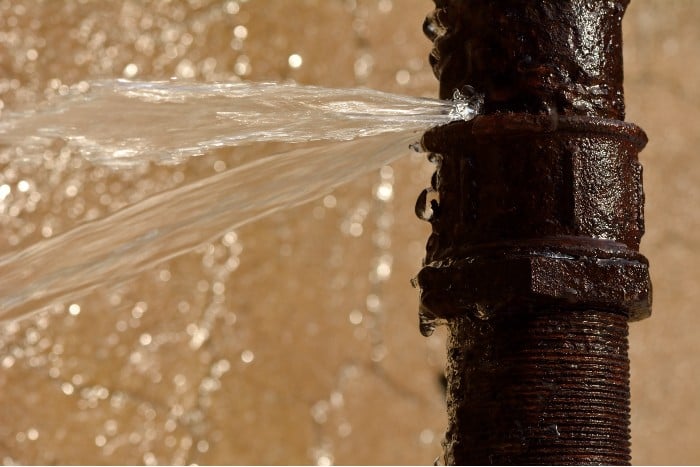Just how do you feel about How to detect water leaks in your home?

Leaks not just trigger waste of water however can additionally cause unneeded damages to your house and advertise unwanted organic growth. Water leaks might go unnoticed since many of the pipework in our residence is hidden. By looking as well as understanding for daily scenarios that trigger leakages, you can secure your house from future leaks and also unneeded damages. Today, we will consider six leakage triggers that might be causing your pipes to drip.
Immediate temperature level changes.
Severe temperature changes in our pipes can create them to broaden and contract unexpectedly. This expansion and also tightening may trigger cracks in the pipes, particularly if the temperature are listed below cold.
Corroded water supply
As time passes by, your plumbing system ages and also rust such as rust might start eating away the pipelines. This could be the cause of staining or bending on your pipes. This calls for an examination with your plumber instantly. Consider changing the pipelines since they are at a higher danger of rust than the more recent versions if our plumbing system is old.
Faulty Pipeline Joints
The factor at which your pipelines link is often the weakest web link in the waterline. Pipeline joints can degrade with time, causing water leakages. Unfortunately, the majority of pipe joints are not quickly visible. If you have noisy pipes that make ticking or banging noises, especially when the hot water is turned on, your pipe joints are possibly under a great deal of stress. It is suggested to have your plumber inspect your system yearly.
Intruding roots
Many water leakages start outside the house instead than inside it. You may notice damp patches or sinkholes in your yard, and that could imply that tree roots are attacking water lines triggering water to permeate out.
Poor Water Connectors
Sometimes, a leakage can be caused by loosened hose pipes and also pipes that supply your home appliances. Generally, moving is what creates the loose water Links. You may find when it comes to a washing maker, a hose pipe might spring a leak as a result of trembling throughout the spin cycle. In case of a water connections leakage, you may discover water running straight from the supply line or puddles around your devices.
Blocked Drains
Obstructed drains may be irritating as well as inconveniencing, but they can occasionally end up triggering an overflow bring about burst pipelines. Maintain removing any type of materials that might go down your drains pipes that could block them to avoid such aggravations.
All the above are sources of leakages however not all water leakages arise from plumbing leakages; some leaks might originate from roof leaks. All leakages need to be fixed instantly to prevent water damages.
Leakages not only trigger waste of water yet can additionally cause unnecessary damage to your house and also promote unwanted organic development. By looking and understanding for daily scenarios that create leaks, you can protect your home from future leaks as well as unnecessary damage. Today, we will certainly look at 6 leakage creates that might be creating your pipelines to drip.
At times, a leak can be caused by loose hose pipes as well as pipes that supply your home appliances. In instance of a water links leakage, you may discover water running directly from the supply line or puddles around your home appliances.
How To Check For Water Leak In Your Home
How To Check for Leaks
The average household's leaks can account for nearly 10,000 gallons of water wasted every year and ten percent of homes have leaks that waste 90 gallons or more per day. Common types of leaks found in the home are worn toilet flappers, dripping faucets, and other leaking valves. These types of leaks are often easy to fix, requiring only a few tools and hardware that can pay for themselves in water savings. Fixing easily corrected household water leaks can save homeowners about 10 percent on their water bills.
To check for leaks in your home, you first need to determine whether you're wasting water and then identify the source of the leak. Here are some tips for finding leaks:
Take a look at your water usage during a colder month, such as January or February. If a family of four exceeds 12,000 gallons per month, there are serious leaks.
Check your water meter before and after a two-hour period when no water is being used. If the meter changes at all, you probably have a leak.
Identify toilet leaks by placing a drop of food coloring in the toilet tank. If any color shows up in the bowl after 10 minutes, you have a leak. (Be sure to flush immediately after the experiment to avoid staining the tank.)
Examine faucet gaskets and pipe fittings for any water on the outside of the pipe to check for surface leaks.
Undetected water leaks can happen without the home or business owner even realizing. If you suspect a water leak, but not able to find the source. It is time to contact a professional water leak detection service, The Leak Doctor.
How To Find a Water Leak In Your Home
https://www.leakdoctor.com/blog/How-To-Check-For-Water-Leak-In-Your-Home_AE197.html

We had been made aware of that article about How Fast Water Damage Can Ruin Your Home through an associate on another web address. Appreciated our post? Please share it. Help other people locate it. Thanks a lot for going through it.
View